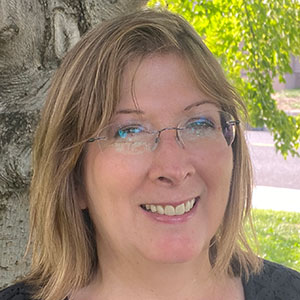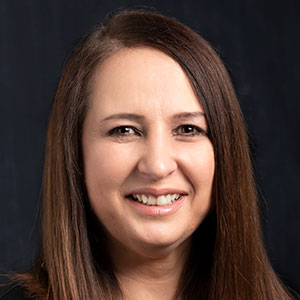"You will not fail here; we won't let you!" said the lead teacher for our 1st-grade team of five teachers at a K-5 public school. I (K.F.) had taught for 11 years in Seventh-day Adventist schools before moving to this Tennessee public school but was usually the only teacher at my grade level. This public school followed the Professional Learning Communities (PLCs) format1; teachers at the same grade level met weekly to share lesson ideas to support struggling students. I was assigned a mentor for my first three years. Then I became a mentor for a new teacher. This program was for first-year teachers and teachers new to the district.
Providing scaffolding for novice teachers is essential.2 When I taught in Adventist schools, I never had a formal mentor. Yet, I experienced the benefit of having support from other professionals, and with a God-given passion for teaching, I grew daily in my profession. However, many novice teachers with the same God-given passion do not have the essential support needed to thrive, and some leave their schools or even the teaching profession after a few years. Would support have helped them stay?
Teacher Attrition Is a Problem
Teacher turnover is a growing problem. As veteran teachers retire, more young, inexperienced teachers replace them.3 Teachers, especially novice teachers, can become overwhelmed with workload responsibilities, classroom management, interactions with parents, constituents, administrators, and high levels of stress.4 Teacher turnover can harm student achievement and has a high financial cost.5 Also, fewer applicants are entering the profession. Between the 2008-2009 and the 2016-2017 school year, universities in the U. S. reported a 27.4 percent drop in teachers completing teacher-education programs.6
It is essential to retain qualified teachers. The United States Department of Education (DOE) studies indicate that, throughout the U.S., roughly 17 percent of new teachers leave the profession within the first five years.7 Earlier research suggested that at least a third8 and, in some cases, as many as 40 to 50 percent of U.S. teachers leave in the first five years.9 Research regarding Adventist teachers' retention rates is limited.
Is Mentoring a Solution?
Mentoring and other supports, such as a reduced teaching load and structured reflection opportunities, can increase retention in the profession.10 Increased support in Finland, Singapore, Canada, and Australia improved retention rates. For example, in a report published five years ago, the Toronto [Canada] school district reported that it was annually retaining 98 percent of its first-year teachers.11 Many U.S. school districts have developed teacher-induction programs to familiarize novices with school culture and norms. Mentoring helps new teachers develop essential skills and confidence and is most effective when it utilizes multiple approaches.12
From 1988 through 2009, the National Center for Education Statistics within the U.S. DOE surveyed teachers from the 50 states and the District of Columbia. The Schools and Staffing Survey (SASS) and the Teacher Follow-up Survey (TFS) indicated that a greater percentage of private-school teachers left teaching than public school teachers.13
Seventh-day Adventist Education
Adventist education differs in many ways from public education. Although both systems prepare students for work within society, Adventist education, like most forms of Christian education, focuses on preparing students for this life and for eternity,14 and encouraging students to commit their lives to Jesus Christ. Adventist education occurs in a nurturing, Christian environment encompassing mental, physical, and spiritual growth.15 Social-emotional learning is another area to be included in a well-rounded education.16
Public school teachers have extracurricular responsibilities, such as bus duty or school leadership committees. The Adventist teacher's responsibilities can be even more encompassing, such as cleaning the school bathrooms, painting the school's exterior, and participating in church activities! Additionally, small school sizes can mean lots of work for each teacher. Many schools in the Adventist Church's North American Division (NAD) have three or fewer teachers (55 percent). In the 2021-2022 school year, the NAD had 161 PreK-12 schools with one teacher, 144 schools with two, 95 schools with three, and 332 schools with four or more teachers. The 9,966 full-time teachers and administrators are employed in elementary, secondary, university, and early-childhood positions. Some administrators are teaching principals. In 2021, NAD schools served more than 74,000 students.17 Adventist teachers, particularly if they have little support and heavy workloads, can quickly "burn out," potentially exiting the teaching profession.
Research on Seventh-day Adventist teacher commitment and mentoring is limited. In a study conducted more than 20 years ago in the Lake Union Conference of NAD, male teacher commitment was correlated with job satisfaction; commitment to the church organization was related to female job satisfaction.18 In 1999, McCune published results of a small survey of Adventist novice teachers in California indicating that 43 percent felt they received unsatisfactory support. Many of these teachers desired mentors.19 The most comprehensive study, however, began in 1987 and continued every two years until 2007. This study, known as the Profile Study, surveyed Adventist educators and was conducted in Bermuda, Canada, and the United States. According to Profile 2004 (and later, Profile 2007), most Adventist K-12 teachers in the NAD were highly educated, certified, and committed to teaching in Adventist schools.20 Analysis of the Profile 2007 study showed that more than 92 percent of the teachers indicated a desire to remain in Adventist schools for the next three years. Teachers were slightly more committed to the Adventist system than to their current school. These results indicated a committed K-12 workforce in the NAD.21
A more recent report showed a loss of about one percent per year of Adventist teachers from Adventist schools worldwide or roughly 1,000 teachers annually.22 About 30 percent of the Adventist teachers worldwide who left were replaced with non-Adventist teachers, which is concerning for a mission-minded church. Although teachers leave for various reasons, it is crucial to examine whether support encourages teachers to stay.
In 2014, the NAD Education Taskforce (NADET) assessed various issues in Adventist education. Recommendations included improving professional-development opportunities and support, especially for teachers at small schools, teaching principals, and boarding academy principals.23 Studies of public schools have shown that mentoring and other supports can raise teacher self-efficacy and retention.24 Novice teachers especially need support.25
Can Support Raise Adventist Teacher Retention Levels?
My (K.F.) research examined the influence of mentoring, teacher self-efficacy (confidence in teaching ability), and perceptions of organizational support on Seventh-day Adventist novice teacher commitment to the teaching profession in the North American Division. Characteristics of effective mentors and mentoring programs were identified, and novices' mentoring experiences, as well as comparisons of novice and mentor expectations, were recorded using quantitative surveys, qualitative interviews, observations, and artifact collection.
The population for my study was novice teachers in areas of the eight union conferences of the NAD located within the continental United States. I obtained Institutional Review Board approval from Andrews University (Berrien Springs, Michigan, U.S.A.) and permission from the NAD Office of Education. Then, I contacted individual conferences and asked them to identify novice and mentor teachers in their territories so that I could interview them for the study.
I (K.F.) used the Novice Teacher Efficacy, Support, and Mentoring Survey to collect responses from beginning Adventist teachers (0-5 years experience). The Mentoring Survey collected responses from teachers who were currently or had recently been mentors. Both surveys asked about years in teaching, grades taught, gender, age, school size, and location. Novices reflected on their commitment to the teaching profession, self-efficacy, and perceptions of organizational support. They reported whether they had an assigned mentor, an informal mentor, or no mentor. Both novices and mentors identified qualities they considered necessary for a mentor teacher and a mentoring program to possess. Teachers were surveyed during the 2019-2020 school year. Interviews, observations, and artifact collection occurred in the 2019-2020 and the 2020-2021 school years (affected somewhat by quarantines).
Data Analysis
Next, quantitative data analysis (frequency distributions, means, standard deviations, percentages, Pearson's correlations, Cronbach's alpha, and hierarchical linear regression) was conducted. Qualitative analysis (coding) analyzed responses to interviews, observations, and artifact collection (mentor handbooks, checklists, and coach and mentor job descriptions). Member checking of participants (returning responses to respondents so they can validate them) helped ensure accuracy and preserved intended meanings.
The researcher (K.F.) observed micro- and macro-mentoring sessions. I defined micro-mentoring as a mentor-novice partnership (a mentor assigned to one or two novices). Macro-mentoring referred to an instructional coach for the school or conference who assisted multiple teachers. Informal mentoring was defined as assistance provided by colleagues, principals, or friends (not assigned mentors).
Results
Fifty-four novice teachers responded from 21 NAD conferences: Arkansas/Louisiana, Chesapeake, Florida, Hawaii, Idaho, Illinois, Indiana, Iowa-Missouri, Michigan, Montana, New Jersey, Oregon, Pennsylvania, Rocky Mountain, South Atlantic, South Central, Southeastern California, Texico, Upper Columbia, Washington, and Wisconsin. Eighty-three percent of the respondents were female, under 30 years old (61.1 percent), and held bachelors' degrees (79 percent). Seventy-four percent had three or fewer years of experience. Novice teachers were from small (1-3 teachers), medium (4-10), and large (11 or more) Adventist schools across the NAD (K-8, K-10, academies). Most teachers had between 11 and 20 students (52 percent) but taught in schools with student populations of 110 or fewer. Roughly 26 percent were teaching in rural settings.
Mentor teachers represented 14 NAD conferences: Arkansas-Louisiana, Chesapeake, Florida, Idaho, Indiana, Iowa-Missouri, Michigan, New Jersey, Ohio, Oregon, Pennsylvania, South Central, Upper Columbia, and Washington. Thirty of the 34 mentors were female, and more than half were between 40-59 years old (56 percent). Student populations in their schools ranged from 11 to 680 students. More than half of the mentors worked in schools with fewer than 100 students.
Novice teachers had moderate commitment levels to the teaching profession; levels of self-efficacy and perceptions of administrative support were also moderate. Self-efficacy encompassed three aspects: implementational (leadership skills), instructional, and relationship. All three self-efficacy aspects were at moderate levels. In this study, mentoring had no statistically significant effect on teacher commitment to the profession. Hierarchical linear regression indicated that teacher mentoring, self-efficacy, and perceived organizational support explained about 38 percent of the variance in teacher commitment to the profession. However, only administrative support and relationship self-efficacy were significant predictors.
Roughly 80 percent of the novice teachers had received some mentoring during their first year or during the survey period. Some had assigned mentors, while others benefitted from conference instructional coaches. Colleagues and principals provided some informal mentoring. Roughly 20 percent of the novices had never experienced mentor support.
Ten novice and 12 mentor teachers were interviewed. These interviews included representatives from the macro-mentoring, micro-mentoring, informal, and no-mentoring groups. Most of the interviews and observations were recorded via Zoom; a few were phone interviews. Observations were conducted in both micro- and macro-mentoring sessions.
Novice teachers lacking support wanted mentors. One teacher indicated that lack of support coupled with the volume of work was "not sustainable over time" and could force her to leave the teaching profession, despite a love for kids and teaching. Teachers with mentors were grateful for the support. Mentors interviewed were dedicated to helping novice teachers.
Both groups felt mentors should provide emotional support, have teaching qualifications, and possess coaching skills. Emotional support included listening and encouragement. A study by Strauss et al. found that teachers desired support and a mentoring relationship that involved good communication.32 Previous literature confirmed the importance of teacher qualifications, including mentor training and coaching skills.33
Novice teacher qualitative themes included: commitment to student success, sense of mission, inconsistent support, appreciation of support, and growing professionally over time. These themes corroborated the perspective that Adventist teachers have a sense of mission,34 and want to lead students to Jesus,35 but may experience inconsistent support.36 Prior research by Thayer et al. confirmed the need to support novice teachers and provide professional development.37
Mentors' themes included: A passion for novice success and reciprocal learning and growth. Mentors noted that accountability is crucial for effective mentor programs. Research has revealed that mentor programs need structure and accountability.38 In this study, there was inconsistency regarding mentor programs; Some novice teachers enjoyed structured mentoring and coaching, some had informal mentors, but others had no support.39
For many participants in my (K.F.) study, a structured program included a formally assigned mentor for each novice teacher. Mentors met regularly with novices. For others, the local conferences provided an instructional coach (or coaches) to assist novices as needed. Many programs also included induction at the beginning of the school year. Whatever method is used, a structured program should offer support, with accountability to the conference for program success.
Of the mentor teachers interviewed, none received remuneration for their time. Mentors were driven by a desire to see novices succeed and felt it a privilege to share ideas and methods gleaned from years of experience. When I taught in the public school system, the only mentors who were compensated were the leaders of the mentoring program at the school level.
Conclusions and Recommendations
With fewer than 100 participants, it is difficult to draw conclusions for all novice teachers in the North American Division or the world. Although self-efficacy and administrative support were significant predictors of commitment to the profession, mentoring as a single variable had no significant effect on teacher commitment. However, as each support variable was added to the equation, the importance of mentoring increased. Mentoring could become statistically significant with a larger sample size and adding other support variables. This conclusion is consistent with Ingersoll.40 Novices who receive an array of supports, such as mentoring, administrative support, planning time, and reduced teaching load, tend to have higher levels of commitment to the profession.
The findings indicated that novice Adventist teachers who feel supported and have high self-efficacy are more likely to remain committed to the teaching profession. Several models were observed in NAD K-12 schools: micro-mentoring, macro-mentoring, and informal support. Currently, inconsistent levels of support exist for novice teachers across the NAD structure, and accountability at the school or conference level is needed. More research needs to be conducted to examine methods that work well in the Adventist school environment. Conferences and principals must find ways to improve support for novice Adventist teachers .41
This article has been peer-reviewed.
Recommended citation:
Kathleen Forbis et al., "Mentoring: An Essential for Novice Teachers," The Journal of Adventist Education 84:2 (2022): 4-9. https://doi.org/10.55668/jae0004
NOTES AND REFERENCES
- Robert V. Bullough Jr., "Mentoring and New Teacher Induction in the United States: A Review and Analysis of Current Practices," Mentoring and Tutoring: Partnership in Learning 20:1 (2012): 57-74. doi.10.1080/13611267.2012.645600.
- Susan A. Ambrose et al., How Learning Works: Seven Research-based Principles for Smart Teaching (Hoboken, N.J.: Wiley, 2010).
- Richard M. Ingersoll, "Beginning Teacher Induction: What the Data Tell Us," Phi Delta Kappan 93:8 (2012): 47-51: https://repository.upenn.edu/cgi/viewcontent.cgi?article=1239&context=gse_pubs.
- Dionna Farmer, "Teacher Attrition: The Impacts of Stress," Delta Kappa Gamma Bulletin 87:1 (2020): 41-50.
- Eliah Watlington et al., "The High Cost of Leaving: An Analysis of the Cost of Teacher Turnover," Journal of Education Finance 36:1 (2010): 22-37: https://www.jstor.org/stable/40704404.
- Emma García and Elaine Weiss, "U.S. Schools Struggle to Hire and Retain Teachers," the second report in "The Perfect Storm in the Teacher Labor Market" series. Economic Policy Institute (2019): https://www.epi.org/publication/u-s-schools-struggle-to-hire-and-retain-teachers-the-second-report-in-the-perfect-storm-in-the-teacher-labor-market-series/.
- Lucinda Gray and Soheyla Taie, Public School Teacher Attrition and Mobility in the First Five Years: Results From the First Through Fifth Waves of the 2007-08 Beginning Teacher Longitudinal Study. First Look. NCES 2015-337: https://nces.ed.gov/pubs2015/2015337.pdf.
- Jimmy Shaw and Jodi Newton, "Teacher Retention and Satisfaction With a Servant Leader as Principal," Education 135:1 (2014): 101-106.
- Ingersoll, "Beginning Teacher Induction: What the Data Tell Us."
- Yvette P. Bynum, "The Power of Informal Mentoring," Education 136:1 (2011): 69-73; Linda Darling-Hammond, "Keeping Good Teachers: Why It Matters, What Leaders Can Do." In Allan C. Ornstein, Edward F. Pajak, and Stacey B. Ornstein, eds., Contemporary Issues in Curriculum (New York: Pearson, 2011): 118-126.
- Linda Darling-Hammond, "Teacher Education Around the World: What Can We Learn From International Practice?" European Journal of Teacher Education 40:3 (2017): 291-309. doi.10.1080/02619768.2017.1315399.
- Juanjo Mena et al., "An Analysis of Three Different Approaches to Student Teacher Mentoring and Their Impact on Knowledge Generation in Practicum Settings," European Journal of Teacher Education 39:1 (2016): 53-76: doi.10.1080/02619768.2015.1011269.
- Ashley Keigher, Teacher Attrition and Mobility: Results From the 2008-09 Teacher Follow-up Survey (NCES 2010-353). National Center for Education Statistics (2010): http://nces.ed.gov/pubsearch.
- Ellen G. White, Education (Mountain View, Calif.: 1903), 13.
- Abiodun A. Adesegun, Christian Education in the Seventh-day Adventist Church in Remo, Ogun State, Nigeria, 1959-2004 (PhD diss., University of Ibadan, 2009). http://circle.adventist.org/download/Adesegun.pdf.
- Kimberly A. Schonert-Reichl, "Social and Emotional Learning and Teachers," The Future of Children 27:1 (2017): 137-155: http://www.jstor.org/stable/44219025.
- North American Division of Seventh-day Adventists, 2021-2022 Adventist Education Statistics (2021): https://adventisteducation.org/stat.html.
- Athanase K. Rutebuka, Job Satisfaction Among Teachers in Seventh-day Adventist Schools and Its Relationship to Commitment and Selected Work Conditions (PhD diss., Andrews University, 1996). https://digitalcommons.andrews.edu/cgi/viewcontent.cgi?article=1673&context=dissertations.
- Betty T. McCune, "Supporting Beginning Teachers in Adventist Schools," The Journal of Adventist Education 61:2 (December 1998/January 1999): 43-47: http://circle.adventist.org/files/jae/en/jae199861024304.pdf.
- Larry D. Burton et al., "What Do We Know About the Quality and Commitment of Adventist Educators?" The Journal of Adventist Education 68:1 (October/November 2005): 10-17.
- Larry D. Burton and Elvetha D. Telemaque, "Quality and Commitment of Adventist Educators: The Latest North American Division Profile Survey Results," ibid. 73:2 (December 2010/January 2011): 30-34.
- Lisa M. Beardsley-Hardy, "The State of Adventist Education Report," ibid. 79:3 (April-June 2017): 11-15.
- Jerome Thayer et al., "Strengthening Adventist Education in the North American Division: Recommendations for Educators," ibid. 79:3 (October-December 2017): 32-37.
- Darling-Hammond, "Keeping Good Teachers: Why it Matters, What Leaders Can Do."
- Nick Kelly, Cheryl Sim, and Michael Ireland, "Slipping Through the Cracks: Teachers Who Miss Out on Early Career Teacher Support," Asia-Pacific Journal of Teacher Education 46:3 (2018): 292-316. doi.10.1080/1359866X.2018.1441366.
- Bullough, "Mentoring and New Teacher Induction in the United States: A Review and Analysis of Current Practices."
- Carol S. Dweck, Mindset: The New Psychology of Success (New York: Ballantine, 2016).
- Bullough, "Mentoring and New Teacher Induction in the United States: A Review and Analysis of Current Practices."
- Lipton and Wellman, Mentoring Matters: A Practical Guide to Learning-focused Relationships.
- Richard DuFour, "What Is a 'Professional Learning Community?" Educational Leadership 61:8 (2004): https://www.ascd.org/el/articles/what-is-a-professional-learning-community.
- Jim Knight, "A Coaching Model for Classroom Management," Educational Leadership 76:1 (September 2018): https://www.ascd.org/el/articles/a-coaching-model-for-classroom-management.
- Sharon Straus et al., "Characteristics of Successful and Failed Mentoring Relationships: A Qualitative Study Across Two Academic Health Centers," Academic Medicine 88:1 (2013): 82-89. doi.10.1097 percent2FACM.0b013e31827647a0.
- Laura Lipton and Bruce Wellman, Mentoring Matters: A Practical Guide to Learning-focused Relationships (Arlington, Mass.: MiraVia, L.L.C., 2018).
- George R. Knight, "The Great Commission and the Educational Imperative," The Journal of Adventist Education 79:3 (April-June 2017): 4-10: https://www.journalofadventisteducation.org/2017.3.2.
- Linda Versteynen et al., “‘What Am I Doing Here?’: Teachers Share Their Passion and Vision for Teaching," TEACH Journal of Christian Education 2:2 (2008): 60, 61. doi.10.55254/1835-1492.1148.
- McCune, "Supporting Beginning Teachers in Adventist Schools."
- Thayer et al., "Strengthening Adventist Education in the North American Division: Recommendations for Educators."
- Darling-Hammond, "Teacher Education Around the World: What can we Learn From International Practice?"
- Kathleen Forbis, The Influence of Mentoring, Self-efficacy and Perceived Organizational Support on Commitment Among Novice Adventist Teachers in North America (PhD diss., Andrews University, 2021), 154. See also pp. 146-159: https://digitalcommons.andrews.edu/dissertations/1755/. Thambi Thomas, "Mentoring the Beginning Teacher," The Journal of Adventist Education 69:2 (December 2006/January 2007): 32-37: http://circle.adventist.org/files/jae/en/jae200669023206.pdf.
- Ingersoll, "Beginning Teacher Induction: What the Data Tell Us."
- Forbis, The Influence of Mentoring, Self-efficacy and Perceived Organizational Support on Commitment Among Novice Adventist Teachers in North America.







